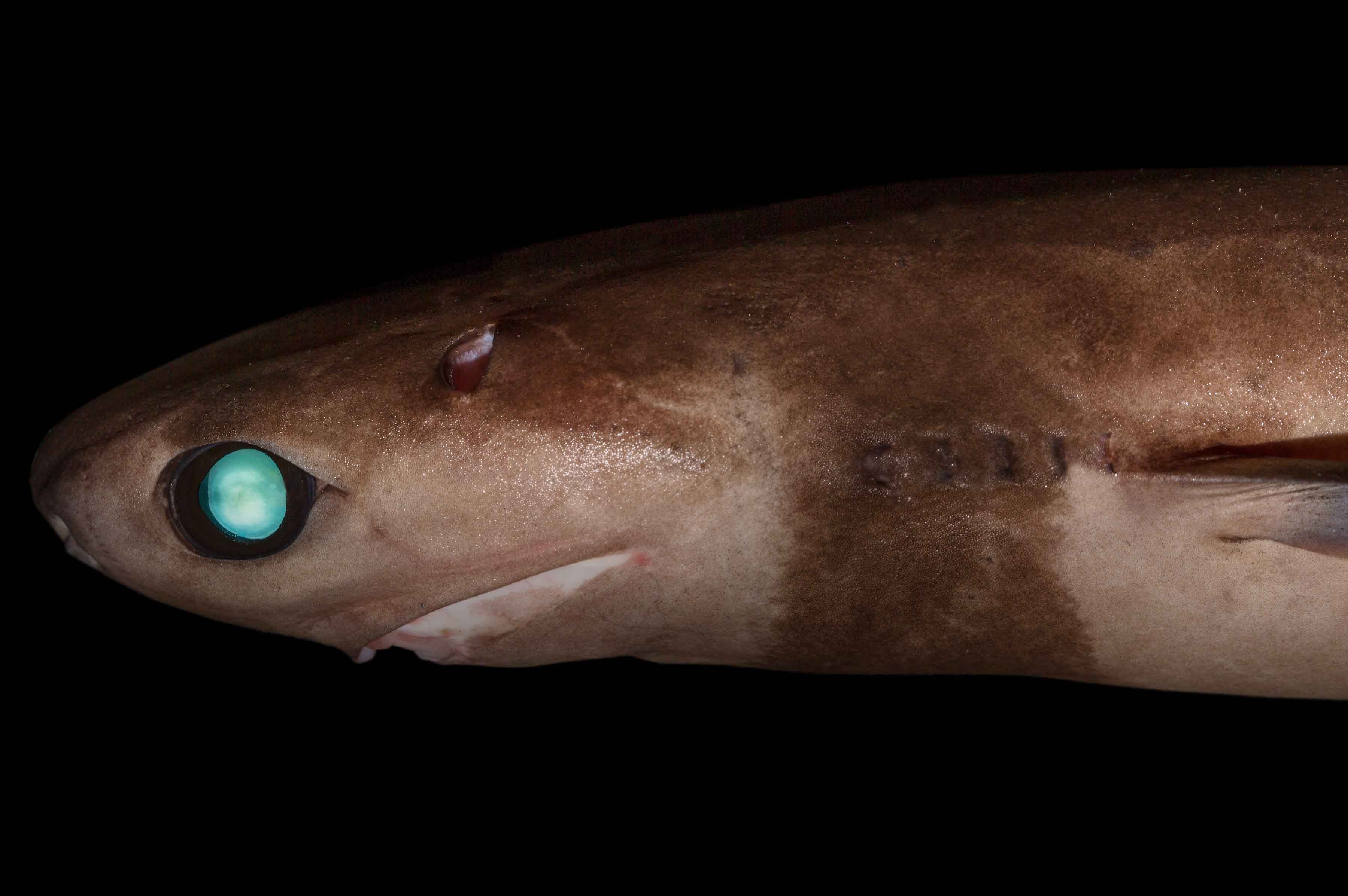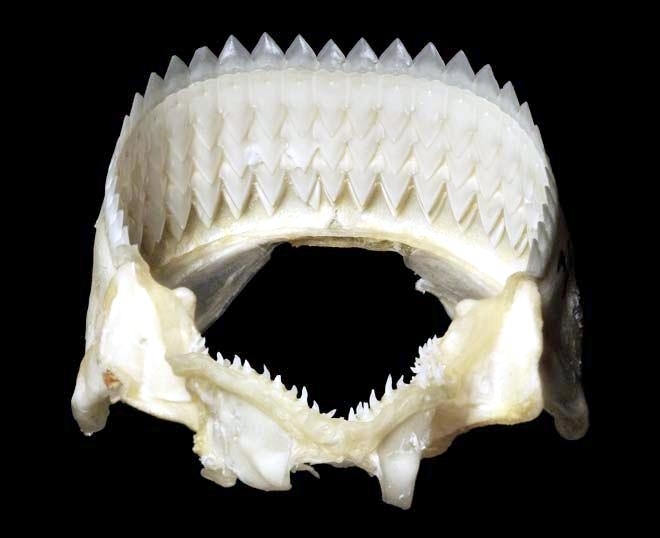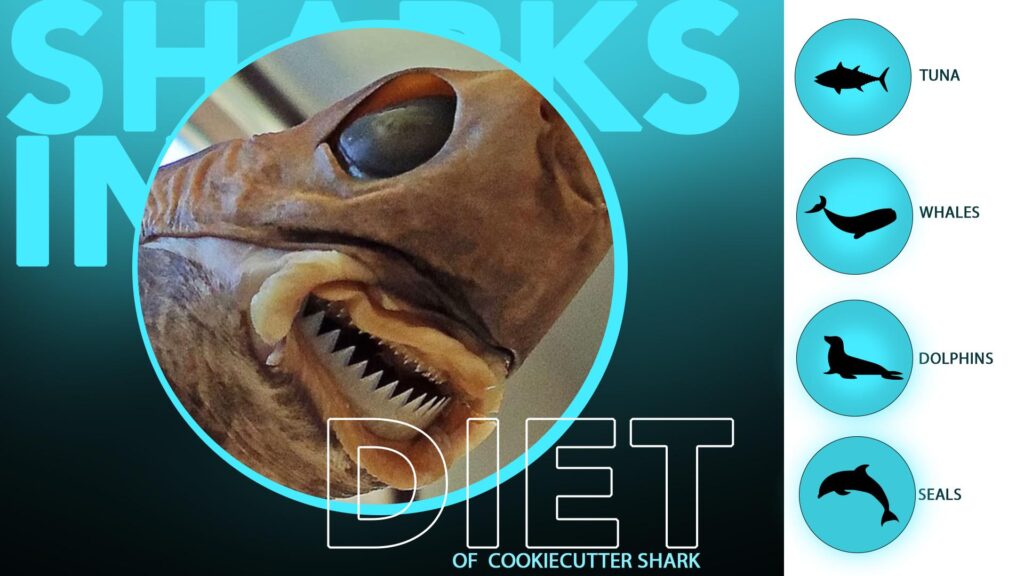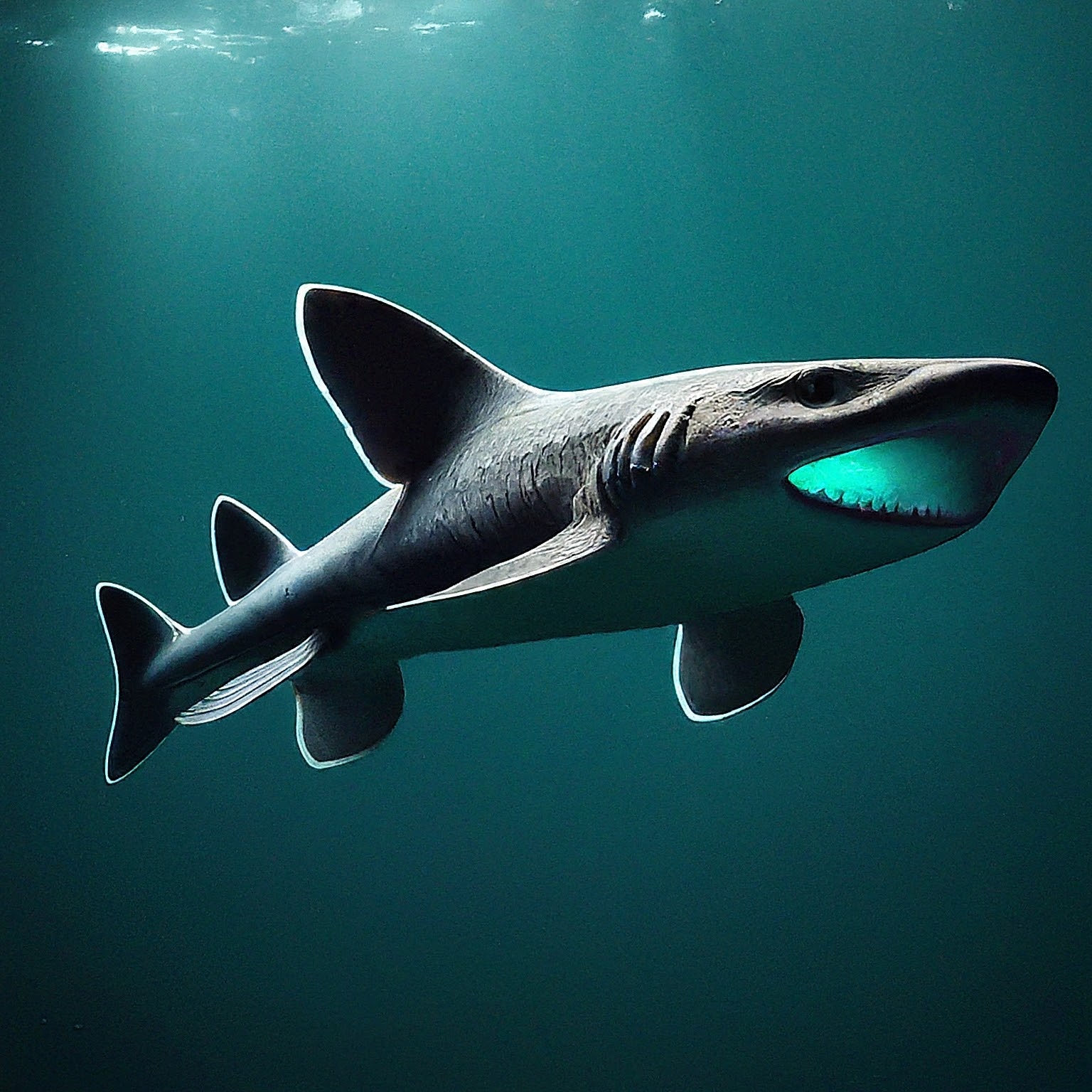The Cookiecutter Shark: The Small Predator with a Big Bite

Beneath the twilight zone of the ocean, in the mysterious realm of the deep sea, lives one of the most bizarre and captivating predators on the planet—the cookiecutter shark (Isistius brasiliensis). Named for the cookie-shaped wounds it leaves on its prey, this small shark is a master of stealth, biological adaptation, and deceptive predation.
Though only about the size of a loaf of bread, the cookiecutter shark has gained fame in the marine biology world due to its incredibly efficient and brutal method of feeding. This article explores the biology, behavior, ecology, and intrigue behind one of the ocean’s most extraordinary species.

Taxonomy and Classification
The cookiecutter shark is a member of the family Dalatiidae, which includes other small deep-sea sharks. It is classified as follows:
-
Kingdom: Animalia
-
Phylum: Chordata
-
Class: Chondrichthyes
-
Order: Squaliformes
-
Family: Dalatiidae
-
Genus: Isistius
-
Species: Isistius brasiliensis
There is also a closely related species, Isistius plutodus, known as the large-tooth cookiecutter shark, though it is much rarer.
Physical Characteristics

Size and Shape
Adult cookiecutter sharks typically grow to a length of 40 to 56 centimeters (16 to 22 inches). Despite their small size, they are formidable due to their specialized mouthparts and predatory tactics.
The shark’s body is cylindrical and tapered at both ends, resembling a cigar. This has led to one of its nicknames: the “cigar shark.”
Head and Eyes
The cookiecutter shark has a bulbous head with relatively large, rounded eyes adapted to the low-light conditions of the deep sea. The snout is short, and the nostrils are positioned ventrally.
Teeth and Mouth
Perhaps its most terrifying feature is its saw-like teeth. The lower jaw is armed with large, triangular, interlocking teeth shaped like a saw blade, while the upper jaw has smaller, sharper teeth used to latch onto prey.
This dental arrangement allows the shark to attach to a larger animal, twist its body, and carve out a neat, circular chunk of flesh—a process that gave the animal its common name.
Coloration and Bioluminescence
Cookiecutter sharks are typically dark brown or blackish on top with a lighter underside. One of their most unique features is their ability to produce light through bioluminescent photophores on their belly.
They use this light in a tactic known as counter-illumination, blending in with the light filtering from above and making their silhouette disappear when viewed from below. This camouflage helps them ambush prey more effectively.
Interestingly, there is a dark collar near the shark’s throat area that doesn’t emit light, possibly mimicking the shape of a small fish to attract predators, which the shark then attacks.

Habitat and Distribution
Cookiecutter sharks are found in warm, deep oceanic waters around the globe, including:
-
The Pacific Ocean near Hawaii, Australia, and Japan
-
The Atlantic Ocean, particularly around the Caribbean and West Africa
-
The Indian Ocean and even parts of the Mediterranean
They are mesopelagic to bathypelagic creatures, meaning they usually inhabit depths ranging from 85 meters to over 3,500 meters (280–11,500 feet), though they often migrate vertically, coming closer to the surface at night to feed.
Feeding Behavior and Prey
Feeding Method
The feeding strategy of the cookiecutter shark is unlike any other in the animal kingdom. Rather than hunt and kill prey outright, it uses a “hit-and-run” approach.
Here’s how it works:
-
The shark locates a large animal, such as a dolphin, whale, or tuna.
-
It uses its suction lips to latch onto the skin.
-
Then it uses its powerful lower jaw teeth to rotate and scoop out a circular piece of flesh.
-
The shark then releases its prey and swims away.
This process takes only seconds and leaves behind a distinctive crater-like wound.

Prey Species
Cookiecutter sharks are parasitic predators, targeting a wide range of animals, including:
-
Whales and dolphins
-
Seals
-
Large fish like tuna, swordfish, and marlin
-
Other sharks
-
Occasionally humans (rare and usually non-fatal)
They also scavenge on dead or dying marine animals and may consume small fish or squid whole when available.
The wounds they leave have been found on submarine cables, undersea vehicles, and even rubber equipment, leading to the discovery of their powerful bite.
Reproduction and Life Cycle
Little is known about the reproductive habits of cookiecutter sharks due to their deep-sea habitat and elusive nature. However, some key facts include:
-
They are believed to be ovoviviparous, meaning the young develop inside eggs that remain in the mother’s body until they hatch.
-
Litters typically consist of 6 to 12 pups, each about 14 to 16 cm long at birth.
-
At birth, the pups are fully formed and ready to survive on their own.
There is no known parental care, and juveniles likely begin feeding on small fish or squid before graduating to the cookie-bite method as they grow.

Evolution and Adaptation
Cookiecutter sharks represent an evolutionary marvel, particularly in their development of parasitic feeding, bioluminescence, and unique dentition.
Bioluminescent Lure
Their use of light not just for camouflage but possibly also for luring prey sets them apart from many other marine animals. The combination of a glowing body with a dark “collar” may mimic smaller animals or attract attention in the dark ocean.
Tooth Replacement
The cookiecutter shark replaces its entire row of lower teeth at once rather than individually like most sharks. The old row is swallowed, possibly to reclaim calcium and phosphorus.
Suction Cup Lips
The shark’s lips form a tight suction seal with prey before the bite, ensuring a clean and deep wound. This trait is unique among sharks and enhances their parasitic efficiency.
Cookiecutter Sharks and Humans

Encounters
While extremely rare, cookiecutter sharks have been known to bite humans, particularly deep-sea divers or swimmers in open ocean waters. Most injuries are minor, consisting of circular wounds that heal without major complications.
Impact on Technology
One of the most unexpected impacts of this shark is on underwater equipment. Cookiecutter bites have damaged:
-
Submarine cables
-
Submersible vehicles
-
Rubber sonar domes on navy ships
These attacks have raised eyebrows in naval and marine technology circles, leading to studies of shark-proof materials.
Cultural and Scientific Importance
Though not widely known to the general public, cookiecutter sharks are of great interest to:
-
Marine biologists, due to their unique adaptations
-
Engineers, for studying their impact on deep-sea technology
-
Ecologists, as indicators of deep-sea biodiversity
Because of their rare sightings and elusive habits, cookiecutter sharks often inspire curiosity and even fear. However, they play a key ecological role in marine food webs and demonstrate the vast diversity of strategies life has developed to survive in extreme environments.
Conservation Status

As of now, the IUCN Red List categorizes the cookiecutter shark as a species of Least Concern. This is due in part to their wide distribution and relative abundance.
However, they are still vulnerable to:
-
Bycatch from deep-sea fishing trawlers
-
Pollution in the open oceans
-
Climate change, which may affect their food sources and migratory patterns
Ongoing monitoring of deep-sea species like Isistius brasiliensis is important to ensure that human activity does not unknowingly push them toward decline.
Interesting Facts
.jpg)
-
Perfect bites – The circular wounds cookiecutter sharks leave are so neat that they were once mistakenly attributed to other animals or even supernatural causes.
-
Alien inspiration – Their eerie appearance and hunting method have inspired deep-sea alien creature designs in science fiction.
-
They glow in the dark – One of the few sharks that are truly bioluminescent, they can emit light to disguise their shape.
-
Whole tooth rows – Instead of shedding teeth one at a time, they lose and replace entire rows of teeth simultaneously.
-
Technological damage – They have been known to damage undersea fiber-optic cables and naval sonar equipment.
The cookiecutter shark may not be the largest or most fearsome shark in the ocean, but it is certainly one of the most fascinating. From its remarkable bioluminescence and stealthy hunting tactics to its perfectly circular bites, this creature is a shining example of how evolution can craft surprising and efficient solutions for survival in the deep sea.
Despite its eerie nature, the cookiecutter shark deserves admiration and protection as a vital part of our ocean’s biodiversity. In a world still largely unexplored beneath the waves, the cookiecutter shark is a vivid reminder of how much we have yet to learn—and how truly strange and wonderful life can be.











